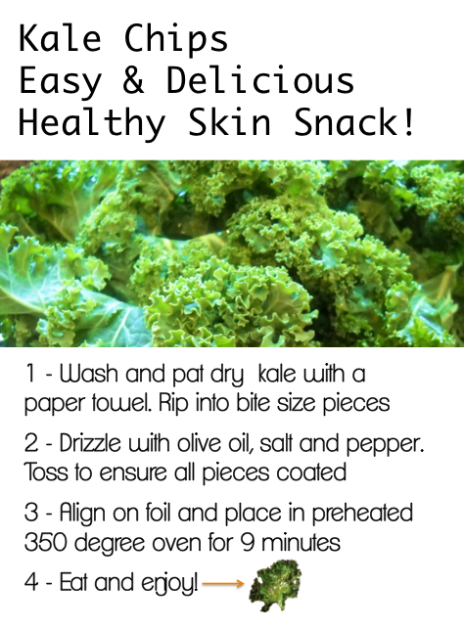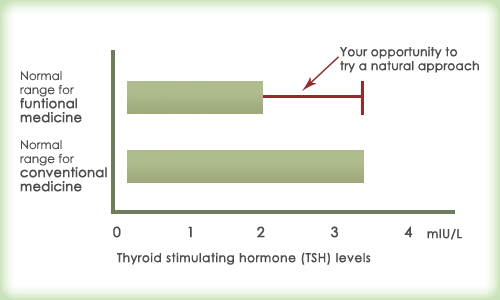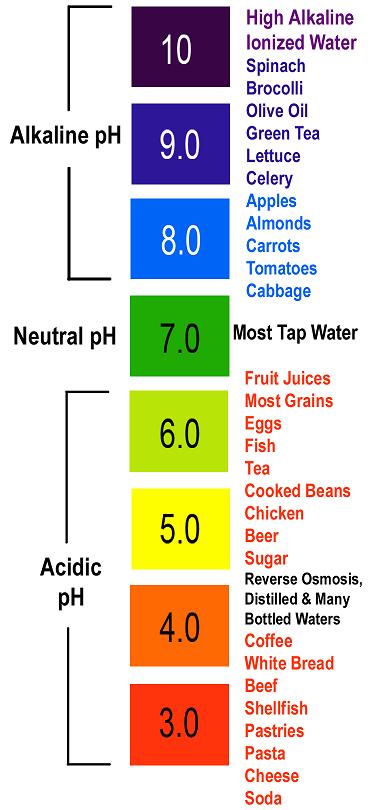Today, even the smallest grocery stores across America are beginning to carry gluten-free foods in a “healthy living” section, right next to the green tea.
Gluten-Free foods are becoming ubiquitous and synonymous with living a healthy lifestyle… even for people without Celiac Disease.
But is gluten-free really healthy? Will it make Celiac Disease a distant memory?
I’m here to tell you no… and there’s a lot to talk about.
The gluten-free diet is the wrong prescription for Celiac Disease
 Evidence is piling up that high inflammation, poor vitamin status, and leaky gut persist on a gluten-free diet, which leads to one thing: untreated Celiac Disease…
Evidence is piling up that high inflammation, poor vitamin status, and leaky gut persist on a gluten-free diet, which leads to one thing: untreated Celiac Disease…
But what could possibly be wrong with a gluten-free diet? Doesn’t gluten cause Celiac Disease?
Yes, gluten causes Celiac Disease and it must be eliminated to treat Celiac Disease… in fact, research suggests that even an acute gluten exposure triggers a 70% increase in intestinal permeability (leaky gut) and a spikes inflammation for as much as 6-months[1].
But there’s a laundry list of other foods that drive inflammation and keep the gut leaky. Don’t get me wrong, gluten is the worst offender. But a Celiac’s gut is severely damaged and highly susceptible to poor food choices. If you don’t remove the “other dietary triggers” contributing to the disease, you’re going to end up sick and pissed off like I was. Going gluten-free isn’t enough… and here’s why.
Eating gluten-free is usually toxic
Mainstream literature on Celiac Disease tells us that eating gluten-free is a healthy lifestyle choice and Doctor’s regularly explain it as the only way to treat newly diagnosed Celiac Disease patients. But the treatment plan is dripping in the same conventional wisdom that created the current Standard American Diet (SAD).
That’s the rub: the average gluten-free diet is built on the same foundation as the SAD… both are low-fat, highly processed diets made up of toxic foods.
The biggest problem with the Gluten-free diet is the reliance on processed foods that are low in nutrients and high on toxins.
The standard gluten-free diet typically contains 4 specific food toxins that contribute to leaky gut, inflammation, and poor vitamin status:
- Cereal grains (like corn, rice, and oats)
- Soy (soy milk, soy protein, soy flour, etc.)
- Industrial seed oils (Canola oil, grapeseed oil, safflower oil, and sunflower oil)
- Sugar (especially high-fructose corn syrup and table sugar)
Even though the worst offending food toxin, gluten, is removed – the gluten-free diet relies heavily on the other four agents of modern disease to create a diet that “looks” very similar to the Standard American Diet. In fact, many types of gluten-free pasta and other packaged foods are loaded with higher concentrations of these 4 food toxins than their original counterparts.
Gluten-free cereal grains are waging war on your gut
In “How Gluten Causes Celiac Disease” I explained that the main reason we don’t eat wheat and other gluten-containing grains is that they contain a protein called gliadin, which is a prolamine that increases zonulin production, causing leaky gut and inflammation.
And remember when I said that plants carry weapons of mass destruction?
It’s no joke… plants are concerned about their survival just like we are. They don’t want to die, which is why they have defense mechanisms to protect them, like toxic antinutrients and proteins that should deter any living being from eating them.
Most cereal grains contain a toxic protein called “prolamines,” which are knurly, tough proteins that humans can’t digest. The research is very clear: we aren’t equipped to “digest” or break down prolamines small enough to absorb any nutrients[2]
Toxic prolamines give the plant a protection mechanism for their survival (since they can’t get up and run away). These proteins irritate the gut lining and sneak their way past the intestinal wall in humans and animals that eat them.
Gliadin is the prolamine in wheat, but other cereal grains common on the gluten-free diet have similar proteins that also cause problems:
- Zein, the prolamine in corn, has been shown to be problematic for Celiacs[3]
- Avenin, the prolamine in oats, triggers a powerful inflammatory response in Celiacs[4]
- Orzenin, the prolamine in brown rice, can cause inflammation in the gut of children[5]
Prolamines are the big guns defending the plant from being eaten alive… but that’s not the only part of these cereal grains that cause problems. They contain another secret weapon just as powerful…
Plant lectins in gluten-free cereal grains are toxic too
If prolamines are weapons of mass destruction, then plant lectins are the plants special forces executing individual suicide missions against your gut lining. These toxic sugar-binding proteins don’t get digested either, and they bind to the cells on the gut wall (enterocytes) and prevent them from completing their normal healing processes (causing them to die). Not only that, but research shows they weasel their way past the intestinal wall and cause leaky gut… and trigger our old friend inflammation[6].
These so-called “healthy, gluten-free grains” are waging war inside your gut because they don’t want you to eat them either… just like gluten. And so far we’ve talked about how these cereal grains promote leaky gut and inflammation…
But remember earlier when I made the point that a gluten-free diet leaves many Celiacs with inflammation, leaky gut, andnutrient deficiencies?
Phytates steal vitamins and minerals right under your nose
Phytates are not for plant defense – they’re for self-fertilization of the plant. They’re specially designed to keep the plant supplied with the necessary vitamins and minerals it needs to stay alive
When we eat them, they bind to metal ions inside us, so they can impair the bioavailability of critical minerals like calcium, magnesium, iron, and zinc[7]. Not only that, but they inhibit the enzymes we need to properly digest foods and extract nutrients from them.
These toxic assaults all add up… and they begin to paint the picture that the gluten-free diet doesn’t work. Even Quinoa, a frequent staple of the “healthy” gluten-free diet, contains large quantities of Saponins. Saponins are another plant defense chemical that severely damages the gut wall and causes leaky gut[10].
Soy disrupts your hormones and your thyroid
Soy is another food that gets coined as “healthy” in mainstream media. It’s found in many gluten-free foods and is even touted as an alternative to eating animals. The Soy industry has spent a TON of time and money trying to convince us soy is healthy. The reality is: Soy’s filled with toxins. Here are the 4 main problems with soy in regards to Celiac Disease:
- Soy screws up your hormones because of the presence of phytoestrogens. This is important because these phytoestrogens are linked to cancer growth and infertility problems. Your hormones need to be working correctly to recover from illness.
- Soy messes up your thyroid. We already covered that if you have Celiac Disease you’re chances are extremely high of getting other autoimmune conditions of the thyroid (like Graves Disease). The same phytoestrogens messing with your hormones are also implicated in hypothyroidism and potentially thyroid cancer[11].
- Soy is high in phyates, which means it robs you of valuable minerals like calcium, magnesium, zinc, and iron.[12]
- Soy increases the need for more vitamin D, which we already know contributes to leaky gut.
For a complete listing of the toxic effects of Soy, check out this PDF from the Weston A. Price Foundation. Just like grains, soy contains toxic chemicals that don’t support recovering from Celiac Disease. Simply put: there’s much better quality food to put in your mouth.
Industrial seed oils inflame your body
Consumption of industrial seed oils (corn, cottonseed, soybean, safflower, sunflower, etc.) has dramatically increased in the last century and the gluten-free diet is no exception. Many processed food off the shelf contain these seed oils that are high in omega-6 fatty acids. In fact, you might even think that some of these oils are “healthy”.
Here’s the thing: when Omega-6 and Omega-3 fatty acids are in a balanced ratio, they don’t promote inflammation. But when Omega-6 fatty acid consumption increases without a corresponding increase in Omega-3 fatty acids, the ratio is out of balance and inflammation occurs. It’s common for a gluten-free diet to be high in omega-6 fatty acids from industrial seed oils and low in omega-3 fatty acids. That’s a recipe for an inflammatory cascade…
Sugar fuels the fire roaring in your body
Carbohydrates and Sugars are the primary food for the bacteria in our gut. Bacteria live on sugar, that’s normal. What isn’t normal is the type of bacteria found overgrowing in the gut of a Celiac patient. Normally there’s a balance between good and bad bacteria.
When the delicate gut flora balance gets upset, opportunistic or pathogenic bacteria can quickly take over and cause ”Gut Dysbiosis” or small intestinal bacterial overgrowth (SIBO). One reason Celiacs frequently have gut dysbiosis is a result of thedamage to the villi of the small intestine. During the active stages of Celiac Disease, the villi aren’t working properly and carbohydrate malabsportion can occur (meaning there’s suddenly a ton of extra food for the bacteria to feast on).
Here’s where the gluten-free diet fits into all this…
The most common sugar consumed in the standard gluten-free diet is sucrose (or table sugar). Sucrose is made-up of one glucose molecule and one fructose molecule bonded together to create a disaccharide (2 sugar molecules). Sucrose gets broken down by the digestive process into mono-saccharide molecules to be absorbed by the gut.
Here’s the catch: the main “splitter” for these chemical bonds is the micro-villi, which we just discussed are damaged and not able to do their job. This leaves us with a surplus of sugar molecules hanging around in the intestine feeding bad bacteria (Read this article for in-depth info on the different kinds of sugar).
In general, the standard gluten-free diet is primarily made-up of processed carbohydrates and processed sugars, which are mostly di- and polysaccharides that need to be “split” in the gut before they can be absorbed. Having a ton of undigested carbs and sugars hanging out in your gut creates the perfect recipe for digestive problems and SIBO…
SIBO makes your gut leak
Researchers have identified small intestinal bacterial overgrowth (SIBO) as the only other stimulus powerful enough to trigger zonulin release and create leaky gut the same way gluten does[14]. In fact, they theorize that the body responds to SIBO by opening up the tight junctions as a defensive immune response intended to flush the bad bacteria from the body[15].
SIBO is overgrowth condition that drives leaky gut syndrome and the gluten-free diet is the fuel to feed the overgrowth. In one study, researchers took small intestinal biopsies from children with Celiac Disease to understand the role bacteria played in the disease. Their results were frightening: they not only found SIBO, but they discovered these children had 42 different rod-shaped bacteria, 30 of which had never been found in the human small intestine before… 18 of which were completely unknown[16]!
Another study looked at adult Celiac patients that weren’t getting better on a gluten-free diet and found that, “SIBO affects most Celiacs with persistence of GI symptoms after gluten withdrawal.”[17]
How can SIBO cause so much trouble?
Pathogenic bacteria produce toxic byproducts that get released in the gut and the bloodstream, (like lipopolysaccharides – LPS). These toxins can severely damage the intestinal cell surface, triggering an inflammatory response as the body attempts to fight off the perceived bacterial threat and cause difficulty digesting and absorbing certain carbohydrates. They can also find their way into the bloodstream and wreak havoc on the liver[18].
Not only that, but while they happily feed on undigested sugars and other carbohydrates that are supposed to feed you, they release gases like hydrogen and methane. The end result is gas, bloating, and diarrhea or constipation… and perpetually untreated Celiac Disease.
The inflammation-leaky gut cycle
The bottom line is: If you have Celiac Disease, you have leaky gut and bad gut flora.
We’ve talked about how prolamines and lectins cause inflammation and leaky gut. We’ve talked about how SIBO causes inflammation and leaky gut… and all within the confines of a gluten-free diet.
When your gut flora is out of balance and your gut barrier is damaged, your gut is going to be inflamed. Inflammation triggers leaky gut and leaky gut triggers inflammation[19]. They all feed on each other in a vicious cycle that looks like this:

The only way to begin treating Celiac Disease is to break this inflammation-leaky gut cycle… and the first step is to recognize that gluten-free isn’t enough. There’s a better way to eat that can begin to halt this process.
So what can a Celiac eat to feel better?
The answer is: eat easy-to-digest, low-toxin, real foods. Foods that don’’t feed bad bacteria or promote inflammation… but at the same time provide adequate nutrition and improve intestinal permeability.
In other words the ideal Celiac Disease diet:
- Doesn’t contain processed foods filled with added sugars, vegetable oils, additives, or dyes that damage health
- Eliminates disaccharides and polysaccharides to starve out overgrown bad bacteria (SIBO)
- Eliminates the most toxic food groups: cereal grains and soy
- Encourages consumption of low-toxin whole foods in their natural state
- Encourages plenty of nutrient dense animal products filled with protein and healthy fats
- Encourages plenty of good bugs (probiotics) through fermented foods or supplements
The gluten-free diet doesn’t fit the bill…
Simply eliminating cereal grains that promote inflammation and leaky gut is a step in the right direction. But if you remove the other 3 toxic foods I mentioned above (soy, industrial seed oils, and sugar) you’ll be one step closer to recovery. At that point, you’ll be eating a whole food, non-processed diet – which is ideal for optimal health based on what we know.
Is that the same thing as a Paleo or Primal diet?
The SCD diet is a form of low-carb paleo/primal that removes common irritants that are problematic in the gluten-free diet, but it also limits the availability of carbohydrates as a food source for bad bacteria and starves them out over time. As the small intestine improves, Celiacs can begin to properly absorb nutrients again. The volume of sugars that are allowed to ferment in the digestive tract becomes less and the symptoms of bloating, gas, and diarrhea start to go away.
About the author
Jordan Reasoner is a health engineer and author. He was diagnosed with celiac disease in 2007 and almost gave up hope when a gluten-free diet didn’t work. Since then, he transformed his health using the SCD Diet and started SCDLifestyle.com to help others naturally heal stomach problems.





 Evidence is piling up that high inflammation, poor vitamin status, and leaky gut persist on a gluten-free diet, which leads to one thing: untreated Celiac Disease…
Evidence is piling up that high inflammation, poor vitamin status, and leaky gut persist on a gluten-free diet, which leads to one thing: untreated Celiac Disease…









